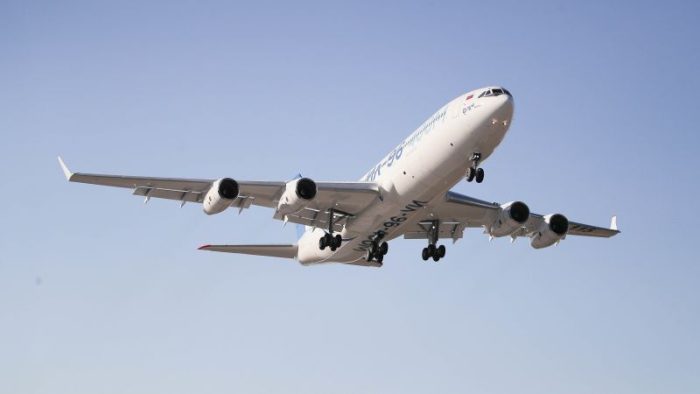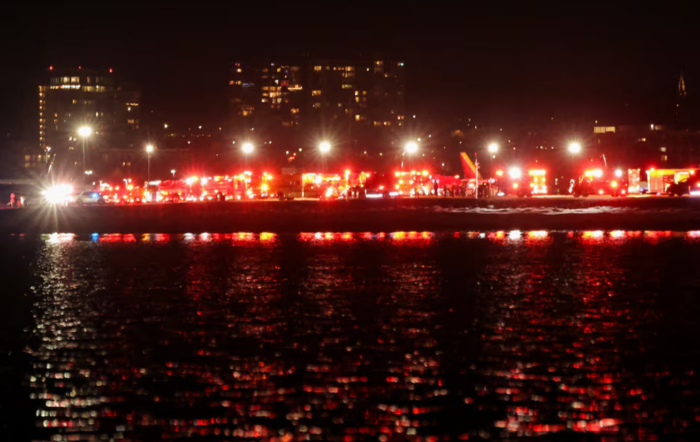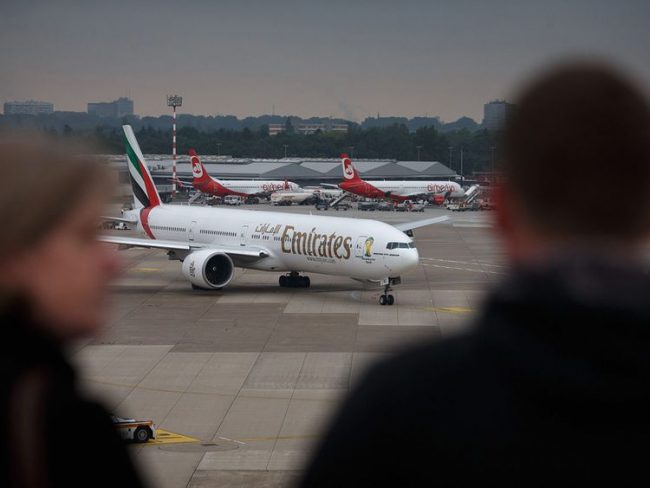
Russia’s leading aircraft manufacturer says it’s completed a successful test flight of a new widebody passenger airplane that it claims could replace Western aircraft in the country’s skies.
The United Aircraft Corporation said a prototype of its IL-96-400M long-haul airplane has taken off for the first time on a flight that lasted 26 minutes and reached altitudes of up to 2,000 meters (6,562 feet) and speeds of up to 390 kilometers per hour (242 mph), according to a news release posted by the company last week.
UAC, which oversees Russian aviation brands including Tupolev, Ilyushin and Sukhoi, said the plane will be capable of carrying up to 370 passengers, a capacity that would put it alongside the likes of Airbus’ A340 or Boeing’s 777.
It said the airplane marked a step up from the previous IL-96-300 aircraft, production of which reportedly halted more than a decade ago because it was unable to compete with Western models.
“The first and successful flight of the modernized IL-96-400M is a demonstration of the highest level of competence of domestic aircraft manufacturers,” Russia’s deputy prime minister, Denis Manturov, said in the release.
According to UAC, the IL-96-400M can be configured in up to three passenger classes and will be installed with a “modern infotainment system” offering internet, TV and satellite communications. It will also be equipped with a “modern” kitchen.
The new airplane, which was photographed midair decorated in UAC corporate colors, could be seen as a public relations win for Russia at a time when its domestic aviation industry is creaking under pressure of Western sanctions imposed because of its invasion of Ukraine.
US and European sanctions on leasing planes to Russia led to that country losing nearly 10% of commercial aircraft before President Vladimir Putin enacted laws allowing Russian airlines to seize leased aircraft and re-register them domestically.
But with limited access to parts for planes made by Boeing, Airbus and other Western manufacturers like Bombardier and Embraer, experts say keeping fleets airworthy will be increasingly difficult. As of 2022, only 144 active Russian airline planes were built in Russia, according to data provided by aviation analytics firm Cirium.
“Although Moscow won’t admit it, the sanctions that followed the Ukraine invasion have really damaged Russian aviation,” Murdo Morrison, head of strategic content at FlightGlobal, tells CNN.
‘Massive gamble’
“The problem is that lack of spares – some get in through the back door undoubtedly – means that many Airbus and Boeing aircraft flying in Russia today are potentially dangerous. Although Russia has a proficient regulator, there is very little visibility as to the health of its fleet.”
In September, an Airbus A320 operated by Ural Airlines, reportedly one of the leased aircraft appropriated by Russia, was forced to make an emergency landing in a field in Russia’s Novosibirsk region due to what was provisionally claimed to have been a midair failure of its hydraulic system.
Last year, a safety audit by the International Civil Aviation Organization resulted in Russia being marked with a “red flag” indicating insufficient regulatory oversight – a status shared by only three other countries – Bhutan, Congo and Liberia.
Addressing concerns, Russia’s Ministry of Transport said at the time that flight safety on Russia-operated aircraft meets international standards.
UAC’s release said the new IL-96-400M’s safety and reliability was comparable to the “world’s best models due to the redundancy of the aircraft’s systems and its aerodynamic configuration.”
The manufacturer also said it would meet international regulatory requirements.
Yuri Slyusar, UAC’s general director, was quoted in the release saying it would, alongside other Russian-built aircraft, be deployed across the country’s aviation network and “replace foreign analogues.”
FlightGlobal’s Morrison says that while the aircraft may be reliable, they will be significantly inferior to their Western counterparts and are unlikely to be manufactured in the quantities once seen under Soviet rule.
“Trying to restore Russia’s pre-1990 aerospace industry is a massive gamble. In fact, it will lose the state billions, although Moscow probably accepts that the political price is worth paying, and, besides, it hasn’t any choice.”


